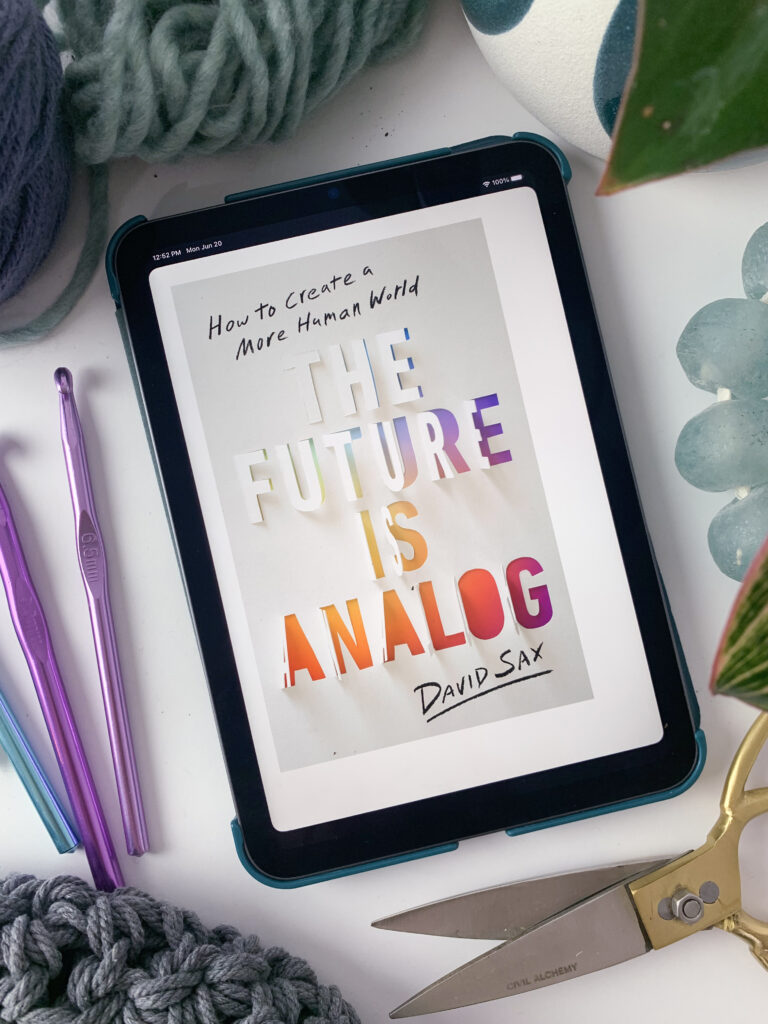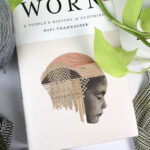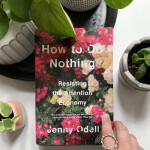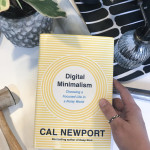
I realize there is something ironic about reading The Future is Analog by David Sax on my iPad, especially considering I very rarely read anything other than physical books these days, but the only way I could get my hands on it before November was to request a digital review copy.
And boy, did I want to get my hands on this as soon as possible! David Sax’s previous two books, The Revenge of Analog and The Soul of an Entrepreneur made my best biz books lists for 2019 and 2020 respectively, so I had a feeling his new book wouldn’t disappoint.
What I loved most about The Future of Analog is that that it wasn’t just a rehash of his previous books. Using the pandemic as a starting point for our accelerated transition to the digital, Sax questions whether this is the future we actually need – or want. This leads to a more nuanced conversation about the role of digital in our lives. Sax is under no allusions that we should get rid of all tech, but questions whether or not it should play a central role in the world.
As someone who runs a business that is, at this point, based solely online (a direction I was headed in even prior to the pandemic), but whose business is built upon championing analog (art and handmade) and who is increasingly disgusted with digital technology, I can appreciate this. In particular, the chapters on school, culture, and soul resonated with me. And the chapter on commerce really hit home, as I have seen that, far from destroying local retail, the pandemic has made us value and support it more.
The one place where I struggled a bit was the first chapter, on work. I found it interesting that a person who has never really worked in an office would argue so hard for the return of collective office spaces. As someone whose greatest fear is having to get a “real job” (translation: show up to an office at the same time every day) I have a hard time reconciling the research Sax shares. Yes, there is some scientific proof that being around other people boosts creativity, but as someone who has worked by themselves for the better part of ten years, I can’t imagine getting work done with other people around.
And I see that in the artists and makers I work with in my mentorship program as well. One recently posted about how she had to cut back her intern’s hours because she wasn’t getting enough alone time in the studio. And she is not the only one who feels this way. Not only do I see this in many of the artists I work with, but it is true for me as well. I need privacy to do my best work, and science backs that up as well. Open-plan offices, it turns out, do not spark creativity, they suppress it.
Still, I appreciate that the chapter on work got me thinking about my own preferences and the experiences of others. (Like my husband, who has had to go into work throughout the pandemic, while the office workers in his company have been able to work from home, creating real inequality amongst the workforce.)
And even though I didn’t agree with every single word, every word made me think. This is why this book definitely falls into the “must-read” category for me, especially for anyone who is increasingly dissatisfied with the idea that the future has to be completely digital.




Leave a Reply